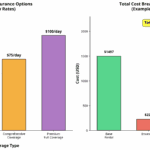Ford Exotic Cars
Exotic cars are luxurious, high-performance cars with a limited number of production. They are expensive, unique, rare, fast, and offer the newest and best technology. When it comes to Ford exotic cars, opinions can vary among car enthusiasts. Some of them might consider certain Ford models to be exotic, while others might not share the same perspective. The categorization of sports cars usually comes down to personal preference.
Ford has been a car manufacturer for more than a century. Through challenges, they have come close to perfecting their exotic car engineering. Some of the most noteworthy exotic cars that Ford has produced include the legendary Ford GT, GT90, Ford Shelby GR-1, and GT Mk IV.
These engineering feats are just a few; now let’s dive deeper into their history and what they meant for Ford and the worldwide automotive industry!
Ford Exotic Cars Evolutionary Journey
As a car manufacturer, Ford has one of the most profound histories in the automotive industry. They have been manufacturing cars for more than 120 years; to say they don’t have an extensive history in the automotive world would be an understatement.
They have manufactured various cars, including SUVs, sedans, crossovers, trucks, and exotic cars. Of course, the cars that best display the genius engineering of Ford are the exotic cars. So, let’s start by introducing Ford’s greatest car ever produced – the Ford GT.
Ford GT40 (1964-1969)
The legendary Ford GT is one part of the greatest automotive rivalry ever. As a result of the Ford vs Ferrari showdown in the 1960s Ford produced their greatest car. Trying to compete with Ferrari in the Le Mans races, Ford Motor Company created their masterpiece.
Ford GT is the most significant US-made race car, paramount not just for Ford Motor Company but the American automotive industry altogether. For car enthusiasts, the Ford GT is more than a car; it is a symbol and an icon. This is the brief history of the irreplaceable and unforgettable Ford GT!
The Ford GT40 won the Le Mans race thrice in 1967, 2016, and 2017. The first Le Mans win was a turning point for the American automotive industry, showcasing that they could compete with the then-dominant European automotive manufacturers.

Source: shutterstock.com / Photo Contributor: Dong liu
Design
The design of the Ford GT was purpose-built for racing. It was aerodynamic, sleek with air intakes, a roof scoop, and the distinctive rear haunches over the rear tires. The interior was minimalistic, with all controls and elements focused on the driver.
Engine options
The Ford GT comes with various engines depending on the production year. Each year had different engine versions. For example, a model with 4.2 liter V8, outputting 350 horsepower, can be found in the 1964-1967 models. Another model with 4.7 liter V8, outputting 380 horsepower, can be found in the 1966 model.
Pricing
Rarity and prices of these models can vary based on mileage, condition, and specification. Although the purchase price for the Ford GT in the 60’s was around $7,000, today they sell anywhere from a few million to 10 million dollars or more.
The price that these Ford GT40s go for seems reasonable when taking into consideration the extremely low production numbers. Only a handful of Ford GTs were ever made, how many remain today and in what condition they are is impossible to say.
Ford RS200 (1984-1986)
The Ford RS200 was developed in 1984 specifically for Group B rallying. It was the most popular category for rally racing during that era. The RS200 had a mid-mounted 1.8-liter turbocharged four-cylinder engine which in the road-legal versions put out 250 hp. While in rally versions, it was performance tuned for much more horsepower.
The RS200 is highly sought after for its collectional value. The limited production numbers and rich history in rally racing made the car unavailable and rare, therefore expensive and desirable.

Source: shutterstock.com / Photo Contributor: Just Jus
Ford GT90 (1995)
The Ford GT90 was a concept car revealed in 1995, as a celebration for the 90th anniversary of the Ford Motor Company. The idea behind the concept car was a more modern overhaul of the legendary GT40 with better technology.
The GT90 was powered by a 6-liter quad-turbocharged V12 that made around 720 hp and 660 ft-lb of torque. It had a 0-60 mph figure of 3.1 seconds and an astounding top speed of 253 mph.
Ford claimed the GT90 would be 13 mph faster than the F1, which had a top speed of 240 mph and was the record holder then. This claim never came to fruition as the car was a one-of-a-kind concept car, and the power figures for the car were likely optimistic.
The GT90 never went into production, and none were ever sold. But it stood as a feat of engineering to display Ford’s engineering prowess and design innovation.
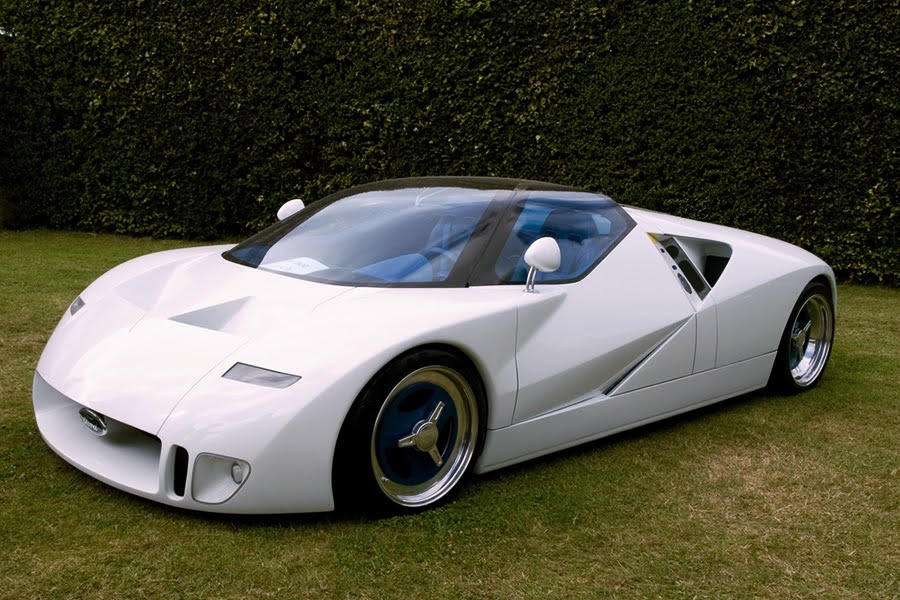
Source: shutterstock.com / Photo Contributor: chrisjj
Ford Indigo (1996)
Another interesting concept car was introduced in 1996. It was an open-cockpit roadster with high performance and a mid-engine configuration. It has a characteristic and recognizable design that sets the concept car apart. It had a futuristic, open cockpit with an F1 overall look.
The car was solely focused on performance rather than comfort or other amenities a car might have. It was powered by a 6-liter V12 that was capable of 435 hp. Of course, performance figures were not widely known as this was a concept car.
The idea behind the car was to showcase the possibility of futuristic design and innovation in the automotive industry.
Ford GT (2004-2006)
Almost 60 years later, in 2002, Ford Motor Company introduced a GT40 concept car, which made it into production in 2004 and for legal reasons had to be called just the “Ford GT”.
The new rendition of the Ford GT made 550 hp from a 5.4 liter supercharged V8 engine. The car was in production from 2004 until 2006, and in that short span of a few years, Ford reminded car enthusiasts of their engineering capabilities.
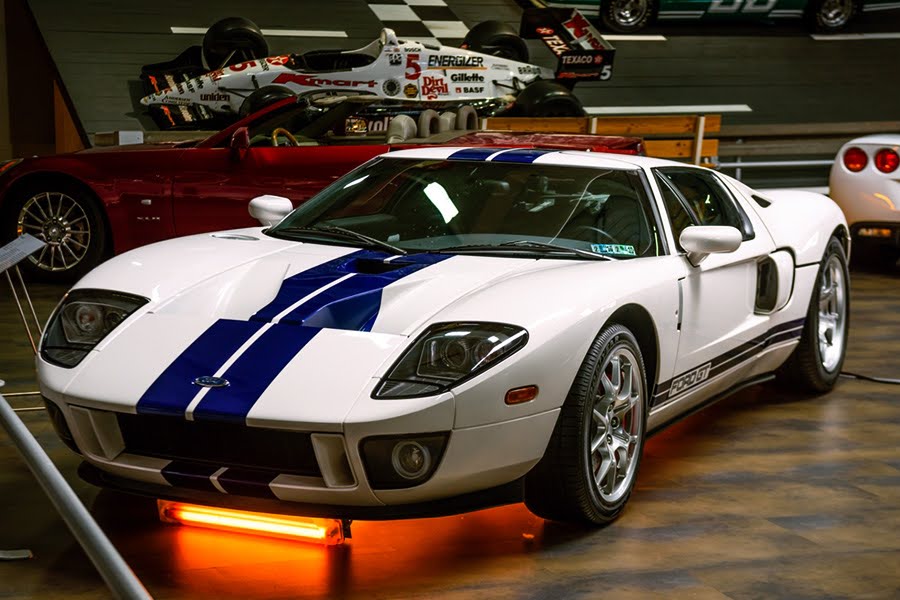
Source: shutterstock.com / Photo Contributor: Dmitry Eagle Orlov
Ford Shelby GR-1 (2005)
In 2005, at the North American International Auto Show, Ford displayed the Ford Shelby GR-1 concept car. It was supposed to have a 6.3 liter V10 engine, presumably making 605 hp.
Although enthusiasts were thrilled, because of Ford’s lack of interest in the car, it never made it out of the concept stage. Financial constraints, economical factors and the Ford GT falling short of its sales projections, ensured that the GR-1 was a risk that Ford Motor Company weren’t willing to take.
Later, in 2019 and 2021, it was announced that Superformance will build a limited number of GR-1s. With an MSRP of $250,000 and a promise of a horsepower figure of more than 750, it got people excited. Superformance stated that production is likely to start in 2023, but no further details have been shared.
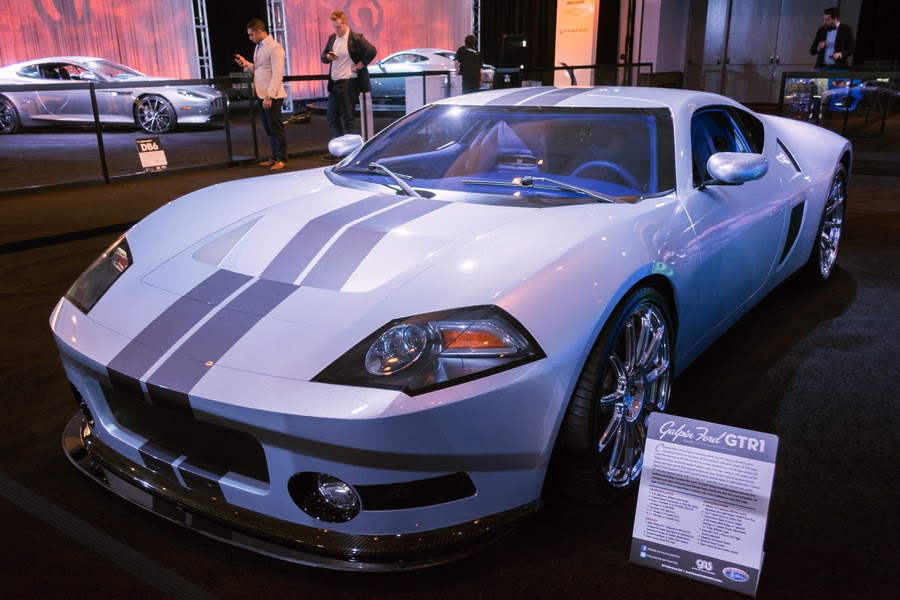
Source: shutterstock.com / Photo Contributor: betto rodrigues
Ford GT (2016-present)
With a new, similar but sleeker design, active aerodynamics, aggressive look, better performance and cutting-edge technology, Ford unveiled the newest rendition of the Ford GT. It is powered by a twin-turbo Ecoboost V6, making a mind-blowing 647 hp. It is the best road-legal race car to come out of the US.
Although the car was unveiled in 2015, it didn’t go into production until 2016, which was the 50th anniversary of their win over Ferrari.
So, Ford chose 2016 as the production date for the Ford GT because of the Le Mans race. The renewed rivalry between Ford and Ferrari was sparked once more. When Ford triumphed over Ferrari once again in 2016 and 2017, claiming the top spot. Ford reminded the car enthusiasts again what they were capable of engineering.
Production of the Ford GT was planned to end in 2022 but ended in February of 2023. A total of 1350 Ford GTs were manufactured over the six years.
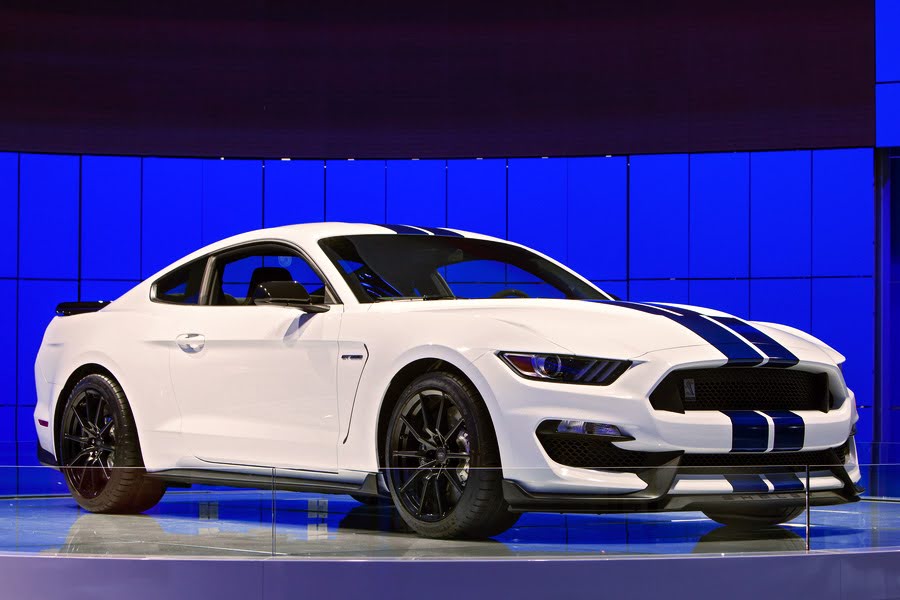
Source: shutterstock.com / Photo Contributor: Darren Brode
Ford GT Mk IV (2023)
The most expensive Ford Motor Company car ever manufactured is the 2023 Ford GT Mk IV. A track-only hypercar with a starting price of $1.7 million. It’s designed and boldly inspired by the original 67’s Ford GT Mk IV and only 67 2023 Ford GT Mk IV will be produced in honor of the original Ford GT Mk IV.
The car boasts an impressive 800 horsepower with additional downforce and aerodynamics, a race suspension, a longer wheelbase, and a bespoke racing box.
This model of the Ford GT is set to be the last of its kind. Putting an end to an unforgettable era of automotive engineering.
Other Ford Exotic Cars
For some car enthusiasts, not all Ford cars are considered Ford exotics. Ford may have supplied important components like engines or platforms for these cars. Some of them were collaborations or concept cars, which technically don’t fall under the Ford exotic car lineup. Here are a few of them:
- Shelby Lone Star Cobra III
- Stainless Steel Ford Model 68
- DeTomaso Pantera (collaboration with Ford Motor Company)
- Shelby GT350
- Shelby GT500
- Shelby Cobra
- Sunbeam Tiger (collaboration with Shelby and Ford Motor Company)
- Lincoln Futura
Conclusion
Ford has an incredibly long and storied history in the car industry. Over the years, they’ve produced a wide range of cars, both those that made it to production and those that didn’t.
No enthusiast can say that there are no Ford exotic cars with such a legendary lineup. Having a look at the Ford GT, Ford Shelby GR-1, Ford GT90, and Ford RS200, you can’t help but be amazed by their awe-inspiring performance and breathtaking design.






